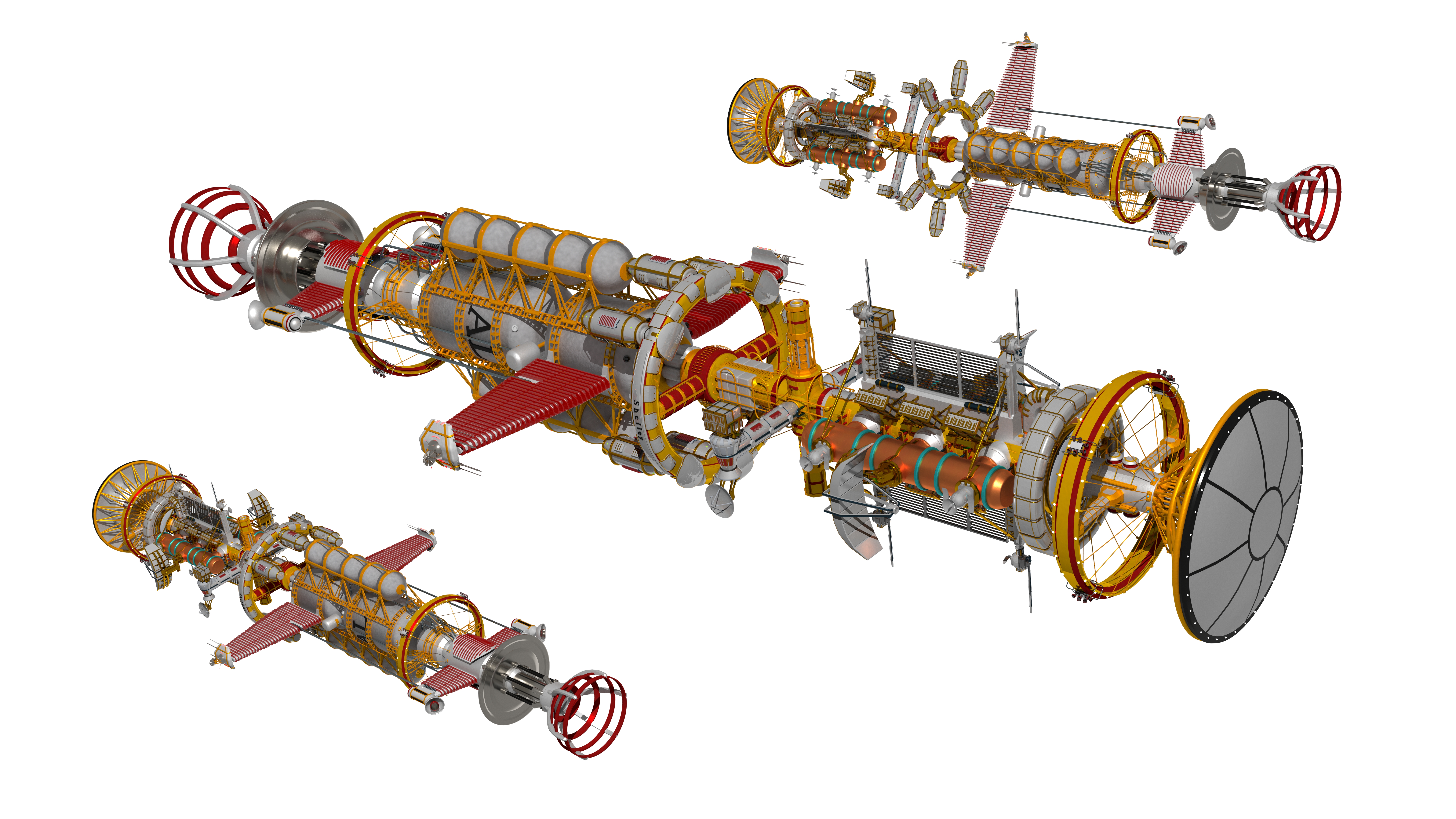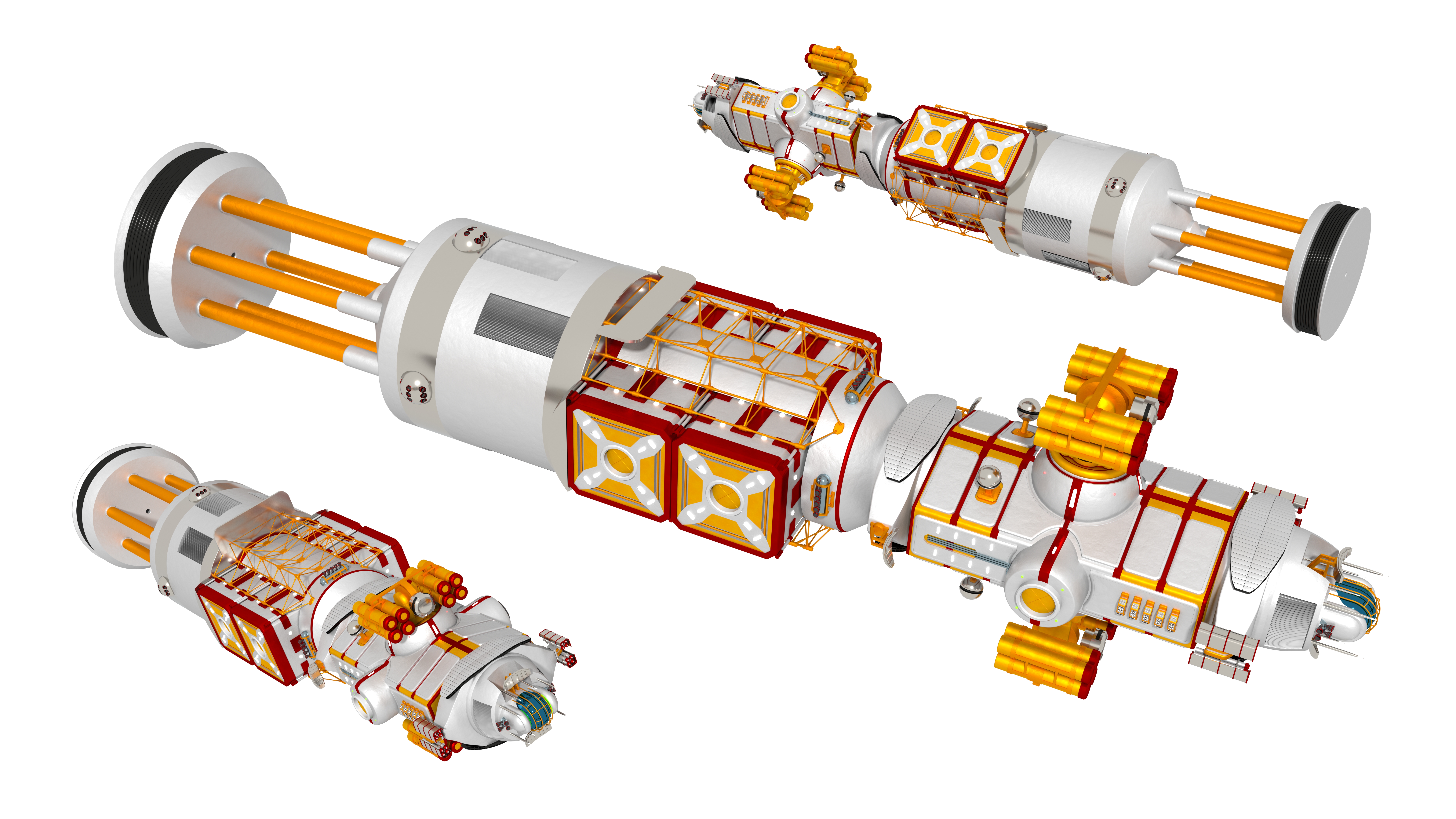HOME | DD
 Do-Mo — Virga class 3
Do-Mo — Virga class 3

#3d #3ds #chemical #comet #future #lander #mini #model #realistic #rocket #shuttle #small #space #spaceship #support #venus #vertical #plutoid #rocketpunk
Published: 2015-11-05 18:07:09 +0000 UTC; Views: 2121; Favourites: 20; Downloads: 0
Redirect to original
Description
Virga class support vesselLength: 14,1m (14,9 with landing legs extended)
Height: 3,7m (11,6 with landing legs extended)
Width: 4,3m (12,2 with landing legs extended)
Dry mass: 25 tons
Full load: 37t
Crew: 3
Main engine: 1x Hydrogen - Oxygen chemical rockets
4x Hydrogen - Oxygen chemical thrusters
Central engine maximum thrust: 800 KN
Side thrusters maximum thrust: 400 KN
Fuel: LH2 - LOX
Fuel supply: 11,5 tons
Central engine mass flow: 182 kg/s
Side thrusters mass flow: 91 kg/s
Central engine acceleration: 21,6 m/s
Side thrusters acceleration: 10,8 m/s
Delta-v: 1725 m/s
Maneuvering thrusters
Hydrogen - Oxygen chemical rockets
Primarily designed to be used by Laurus Nobilis class science vessels , however they are sometimes used with other ships as well. They are built as durable and long lasting vertical landers with some added functionalities to them. Their main purpose is to land on comets and plutoids, as well as to be able to perform an unassisted liftoff. Should the situation call for it, While landed, they are able to refuel themselves, provided they land close enough to a sufficient supply of water ice. They are also able to perform some science experiments while landed, as well as to store surface samples while they carry them to their mother ship. Obviously their engines are overpowered for these tasks, which is why they are rarely used at full power. This added power is there for rare situations that might occur. For instance, should one of the landers be damaged on landing, the other has the capability to lift them both up, another situation would be to push chunks of rock or ice, while in space. And in extreme circumstances, they can be used to push their mother ships.

























